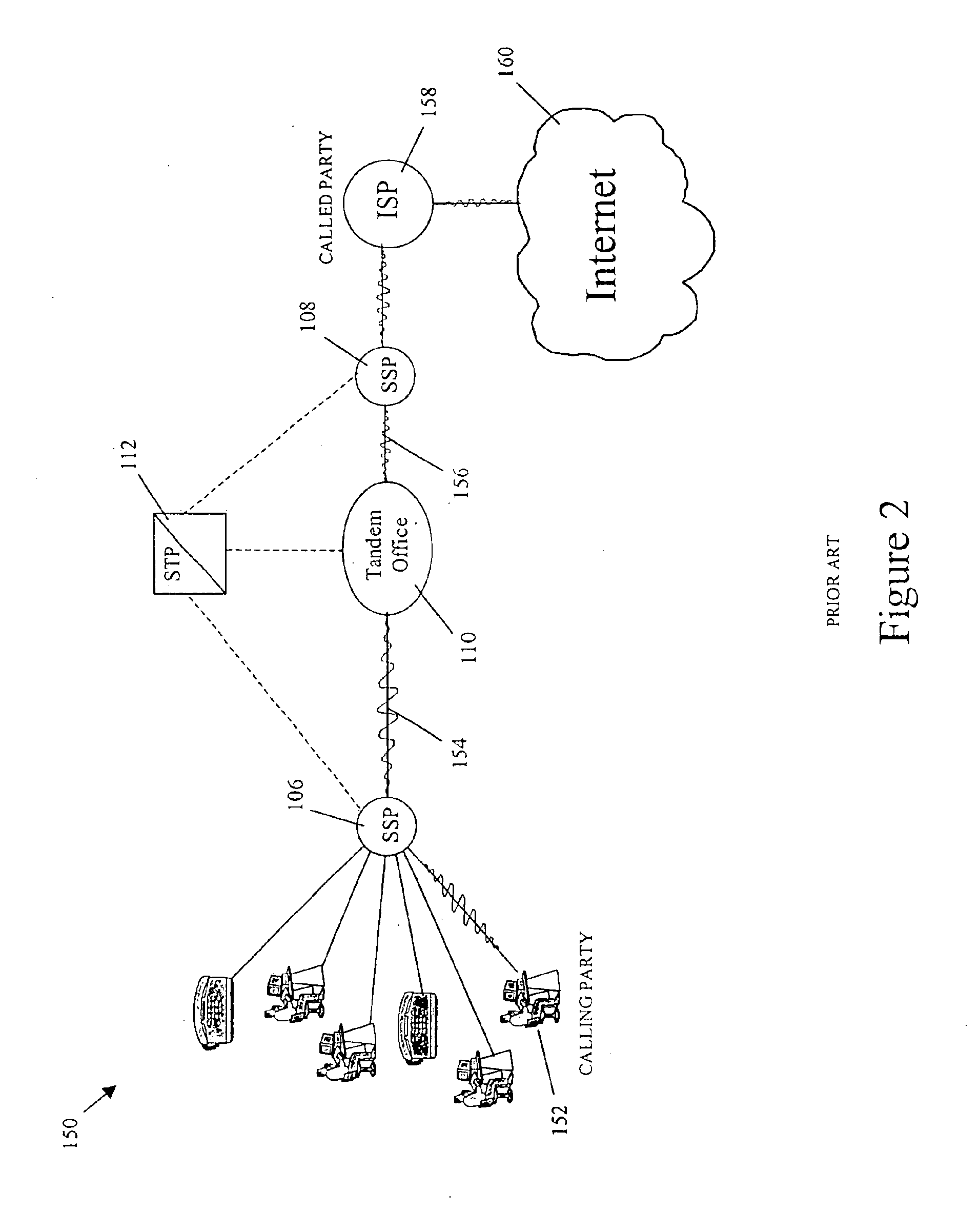Methods and systems for routing signaling messages in a communications network using circuit identification code (CIC) information
a communication network and circuit identification technology, applied in data switching networks, frequency-division multiplexes, instruments, etc., can solve problems such as severe termination ssp or eo convergence problems, unattractive call scenarios for telephony service providers, and “convergence” problems, so as to facilitate the setting up and tearing down of voice-type calls
- Summary
- Abstract
- Description
- Claims
- Application Information
AI Technical Summary
Benefits of technology
Problems solved by technology
Method used
Image
Examples
Embodiment Construction
[0040]Disclosed herein are several embodiments of the present invention, all of which include a network element that performs functions similar to that of a traditional telecommunications network packet routing switch, such as a Signal Transfer Point (STP). Each of the embodiments described and discussed below, employs an internal architecture similar to that of high performance STP and signaling gateway (SG) products which are marketed by the assignee of the present application as the Eagle® STP and IP7 Secure Gateway™, respectively. A block diagram that generally illustrates the base internal architecture of the IP7 Secure Gateway™ product is shown in FIG. 4. A detailed description of the Eagle® STP may be found in the Eagle® Feature Guide PN / 910-1225-01, Rev. B, January 1998, published by Tekelec, Inc. of Calabasas, Calif., the disclosure of which is incorporated herein by reference in its entirety. Similarly, a detailed description of the IP7 Secure Gateway™ may be found in Teke...
PUM
 Login to View More
Login to View More Abstract
Description
Claims
Application Information
 Login to View More
Login to View More - R&D
- Intellectual Property
- Life Sciences
- Materials
- Tech Scout
- Unparalleled Data Quality
- Higher Quality Content
- 60% Fewer Hallucinations
Browse by: Latest US Patents, China's latest patents, Technical Efficacy Thesaurus, Application Domain, Technology Topic, Popular Technical Reports.
© 2025 PatSnap. All rights reserved.Legal|Privacy policy|Modern Slavery Act Transparency Statement|Sitemap|About US| Contact US: help@patsnap.com



